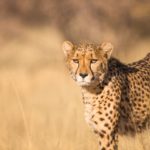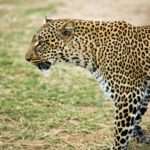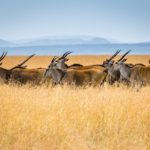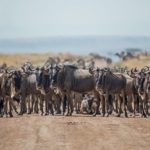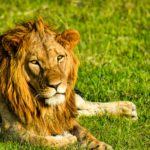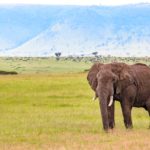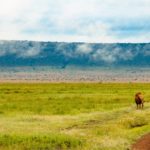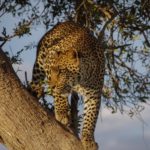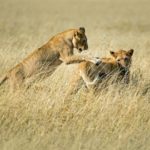A Guide to visiting Kenya
Straddling the Equator, and stretching from the Indian Ocean’s coral reefs and white-sand beaches to the colossal spread of the Great Rift Valley and beyond, Kenya is a country of huge variety and exceptional natural beauty. The country’s lush grasslands, riverine forests, high plains and moorlands, mountain slopes and semi-deserts provide an amazing range of habitats for the full panoply of East African wildlife, and an equally wide choice of options for Kenya holidays. ‘Safari’ was a concept invented here – the word means journey in Swahili.
Wildife in Kenya
The wildlife in Kenya is often remarkably approachable. While never tame (and you should treat all wildlife with great caution), Kenya’s wild animals have lived with a comprehensive hunting ban for the last 40 years, meaning their fear of humans is greatly reduced. There are few other places on earth where you can easily watch large predators hunting, or megafauna such as giraffe, elephant and hippo interacting and behaving quite naturally while you capture their images on a sensor.
Kenyan safaris
Not only does Kenya offer terrific wildlife safaris but it is also home to peoples of more than 40 different cultures, with their own languages, music and traditional dress. Traditional cultural expression is still very much alive, especially in the Mara region, throughout the north and in pockets around the rest of the country, and while we don’t offer any purely cultural safaris you are very likely to experience some fascinating encounters with the various Kenyan tribes in your host communities – whether trying your hand at warrior-training with the Maasai at your safari camp, leaning about Samburu life-cycle ceremonies during a village visit, or simply picking up folklore and phrases in the local Kenyan language from the night guards at your camp every time they escort you to and from your tent.
Kenya’s well-justified popularity means it has some very large and busy lodges. As the country plays host to some of the most popular safaris in Africa, certain areas can be especially busy at key times from July to September and over Christmas and New Year. This is where Jomaar Explores Limited’s depth of knowledge is invaluable. We’ll help you design a trip that avoids many of the crowds while advising about the Kenyan climate and highlighting Kenya’s best features: superb camps and lodges, good infrastructure, and breathtaking wildlife encounters in some of the world’s most spectacular landscapes.
Where to go
Kenya is the home of safari and one of the world’s top holiday destinations. Kenya sits halfway down the East Coast of Africa, astride the equator. It is the most accessible country in the region. Kenya’s appealing world of attractions ranges from stunning landscapes, cultural diversity, adventure sports, and beautiful beaches to unique wildlife. It is fascinating from the sheer diversity of its many game parks. One of the greatest sights is the annual migration of two million wildebeests – together with half a million zebras and thousands of gazelles across the endless savannah. Kenya boasts as the only country in the world with a national park in the capital.
Welcome to Kenya
Vast savannahs peppered with immense herds of wildlife. Snow-capped equatorial mountains. Traditional peoples who bring soul and colour to the earth.
Stirring Landscapes
When you think of Africa, you’re probably thinking of Kenya. It’s the lone acacia silhouetted on the savannah against a horizon stretching into eternity. It’s the snow-capped mountain almost on the equator and within sight of harsh deserts. It’s the lush, palm-fringed coastline of the Indian Ocean, it’s the Great Rift Valley that once threatened to tear the continent asunder, and it’s the dense forests reminiscent of the continent’s heart. In short, Kenya is a country of epic land forms that stir our deepest longings for this very special continent.
Aberdares National Park
The Aberdare National Park is a 765.7 sq Km fairytale paradise of dense highland forest and misty spaces of Afro-alpine moorland, deep gorges and ravines where icy rivers plunge in glorious cascades and waterfalls such as the Gura (791ft) or Karura Falls (894ft). The Kikuyu name for the mountains is Nyandarua (drying hide), due to its distinctive outline. The Salient, stretching out towards the nearby town of Nyeri, was once an elephant migration route. These great animals remain within the park together with buffalo, a wide variety of antelope, giant forest hog, the elusive bongo antelope, black rhino, lions, leopards and hyenas. Encountering a group of elephants at a narrow bend in the road, in the middle of this thick luxuriant vegetation is a completely new sensation. At 2000m, forest gives way to dense clusters of bamboo. At 3500m, the vegetation is already scarce and is mostly composed of tracts of heather. Here, Giant Lobelias and Giant Senecio, which grow to heights of 5m, flourish. The highest point is Ol Doinyo Lesatima, at 3999m. A visit to either of these areas provides an opportunity for bird-watching in three distinctive vegetation zones. These are thick highland forest, bamboo forest and Afro-alpine moorland and no less than 13 species of sunbirds; including the northern double-collared, golden-winged, tacazze, green-headed, variable and scarlet-tufted malachite, along with the larger birds of prey such as the Mountain Buzzard and African Goshawk.
Amboseli National Park
Second in popularity after the legendary Masai Mara, Amboseli National Park not only offers great game viewing but it’s also the place to go for the best views of iconic Mount Kilimanjaro. The world’s tallest free-standing mountain actually stands just across the border in Tanzania, but Amboseli has a postcard-perfect view of its snow-capped peaks, rising almost six vertical kilometres above the savannah. The best time to view ‘Kili’ is at dawn and sunset when the clouds lift and the light is clear and soft.
Diani Beach
Diani Beach is a major beach resort on the Indian Ocean coast of Kenya. It is located 30 kilometres south of Mombasa. With a flawless stretch of white-sand beach hugged by lush forest and kissed by surfable waves, Diani also has some of the best accommodation in Kenya, recently voted as one of the top 25 beaches in the world on TripAdvisor, Diani is without a doubt the most popular beach at the coast of Kenya. The sparkling white sands and lush greenery of Diani invite you to relax under a beach umbrella with a refreshing drink.
Laikipia Plateau
Laikipia is a mid-altitude plateau, which formerly consisted of community land and ranch land. The plateau has been turned into a patchwork of private game reserves, with vast ranches where cattle and wildlife live alongside each other. This is prime Big Five territory at the base of snow-capped Mount Kenya. It is also home to many indigenous communities including the Laikipia Masaai and Samburu. Some of Kenya’s most outstanding conservation work is currently being carried out here.
Lamu Beach
The town was founded in the 14th century and it contains many fine examples of Swahili architecture. The old city is inscribed on the World Heritage List as “the oldest and best-preserved Swahili settlement in East Africa”. There are several museums, including the Lamu Museum, home to the island’s ceremonial horn (called siwa); other museums are dedicated to Swahili culture and to the local postal service.
There are several museums, including the Lamu Museum, home to the island’s ceremonial horn (called siwa); other museums are dedicated to Swahili culture and to the local postal service.
Masai Mara Game Reserve
Maasai Mara (Masai Mara) is situated in south-west Kenya and is one of Africas Greatest Wildlife Reserves. Together with the Serengeti National Park in Tanzania it forms Africas most diverse, incredible and most spectacular eco-systems and possibly the world’s top safari big game viewing eco-system.
Meru National Park
One of the most popular Kenyan parks in the 1970s, when it was strongly associated with Joy and George Adamson of Born Free fame, Meru fell of the tourist map in the late 1980s when it was practically commandeered by commercial poachers. Fortunately it has undergone a near-total recovery since I first visited it in the early 1990s, and game viewing and amenities have improved over every subsequent trip. Elephant, buffalo and lion are all present in fair numbers, rhino are almost always seen in a fenced off rhino sanctuary, and there are also several northern species at the southern extent of their range e.g. reticulated giraffe, Grevy’s zebra, Beisa oryx, gerenuk and a host of dry-country birds including the striking vulturine guinea fowl. But it is the wilderness atmosphere that most impresses, enhanced by the limited tourist traffic – you can still go entire game drives here without seeing another vehicle.
Mombasa City
Mombasa is the largest town on the Kenya coast, established as a vital harbour which has supplied the interior for centuries and served as a staging post for the slave-trade in days gone by. Much of this legacy is no longer evident, though the city is a noisy, humid melting pot of the various peoples that have passed through here at one time or another.
Primarily Muslim, a legacy from Arab and Indian traders, the town’s mosques echo the call to prayer at intervals during the day and in between, the hustle and bustle of the city fills the silence. The town itself is a low sprawl of buildings that look like they’ve seen better days and the streets are scattered with street traders selling everything from rubber flip-flops to slices of pineapple, brightly coloured cloth, plastic combs and live chickens.
Mombasa is actually an island connected to the mainland on two sides by bridges, and on the southern side by a roll-on-roll off ferry which is an experience to say the least. The beach hotels are mainly to the north of the city on the mainland, such as Nyali and Bamburi and there is a string of big resort hotels along the white sandy beaches. Kenya’s beaches are still some of the nicest in the world and there is plenty on offer for people that aren’t particularly fussed about sharing. However, there are perhaps other destinations that, whilst requiring a bit more effort to get to, offer ten times more by way of a memorable experience.
Mount Kenya National Park
Mt. Kenya National Park is located to the east of the Great Rift Valley, about 175km North-East of Nairobi. The ecosystem lies in Central and Eastern provinces of Kenya. At 5,199m the mountain is the second highest peak in Africa. Mt. Kenya is an important water tower in the country. It provides water for about 50% of the country?s population and produces 70% of Kenya?s hydroelectric power.
UNESCO inscribed Mount Kenya as a World Heritage Site. Its described as one of the most impressive landscapes in Eastern Africa with its rugged glacier-clad summits, Afro-alpine moorlands and diverse forests that illustrate outstanding ecological processes.
Lake Naivasha
Lake Naivasha is a fresh water lake on the floor of the Great Rift Valley dominated by the harsh volcanic crater of Mt Longonot to the east and the Eburu Hills to the west. The lake sits at a deceptively high altitude of 6,000ft; higher in fact than Nairobi which is odd considering the massive drop you have to negotiate to get down on side of the Rift.
This area of the Rift was popular in the first half of the 20th Century, with the popularly branded ‘Happy Valley set’ which today sweepingly encompasses any white British person with a little bit of money who claimed their place in the sun. In fairness, the antics of the few tainted the many and while there is many a juicy scandal, there were a great deal of hard-working pioneers who laid the framework for the development of colonial East Africa.
Naivasha was home to an assortment of folk, some of whom have left impressive legacies by way of Elizabethan manors, sprawling ranch houses and beautiful areas of acacia woodland bordering the lake. Sadly, for the look of the place, if not the national economy, flower farms and vegetable farms are now the most obvious feature, although there are still some beautiful ranches and lodges with a great deal of character which offer friendly hospitality and freedom to explore.
There is also Hell’s Gate National Park where game is not prolific but walking is permitted and makes for a nice diversion. It is slightly difficult to know where to place Naivasha from a visitors point of view as it won’t be for everyone but there are certainly some highlights to be noted.
Lake Nakuru National Park
The park lies in Central Kenya, 140km north-west of Nairobi, in Nakuru district of the Rift Valley Province. The ecosystem comprises of the lake, surrounded by mainly wooded and bushy grasslands. The park supports a wide ecological diversity with Flamingos (Greater and Lesser) and other water birds being the major attractions of the area. The ecosystem provides for about 56 different species of mammals including the white rhino and buffaloes and a variety of terrestrial birds numbering nearly 450 species.
Nairobi National Park
If you are in Nairobi and have a free morning, there’s no excuse not to visit this great park.
Just a few minutes from the city center, this park offers sightings of lions, black rhino, zebras, giraffes, cape buffalo, wildebeest, hippos, ostrich, and more. The park is small when compared to other destinations in Kenya, so you won’t see elephants roaming around (co-located with the park is an elephant orphanage that is highly recommended). We offer guided tours around the park, and this might be your best bet to maximize your chances of seeing lots of animals. With Nairobi’s skyline to the north of the park visible from much of the area, the eastern part of the park tends to have more zebra and giraffes than the western part. Wildebeest, cape buffalo, various kinds of deer, impala, eland, and ostrich are plentiful throughout the park. Sightings of a black rhino are also more likely in some of the other parks. Kenya has a ton of safari opportunities that will beat Nairobi National Park when it comes to wildlife, scenic beauty, and bush vibe. However, the close proximity of this park to Nairobi and the ease of access make it a great option for anyone spending a day or two (or even a few hours) in the city.
Samburu National Reserve
Samburu National Reserve lies in the Northern part of Kenya. It is famous because of the richness of flora and fauna. Lying on the flood plains and bottom land of Waso Nyiro drainage system in the Great Rift Valley, it rises to an altitude of 2785 ft above sea level and covers an area of 390 km2. It can be reached through Nairobi-Isiolo-Marsabit road and Maralal-Wamba-Isolo road.
There are over 50 species of wild animals in the reserve including unique species of Gravy Zebra, Reticulated Giraffe, Besia Oryx, Grater and Lesser Kudu, Gerenuk, Somali ostrich, pancake tortoise and others. There are over 450 species of birds identified and aquatic species in the Waso Nyiro River.
Tsavo East National Park
Tsavo East National Park is one of the oldest and largest parks in Kenya at 13,747 square kilometres. Situated in a semi-arid area previously known as the Taru Desert it opened in April 1948, it is located near the town of Voi in the Taita-Taveta County of the former Coast Province. The park is divided into east and west sections by the A109 road and a railway. Named for the Tsavo River, which flows west to east through the national park, it borders the Chyulu Hills National Park, and the Mkomazi Game Reserve in Tanzania.
Tsavo West National Park
Tsavo is made up of two separate parks, Tsavo East National Park and Tsavo West National Park. Located in Coast Province of Kenya in between Nairobi City and Mombasa. Tsavo is nearly 22,000km2, being the largest national park in Kenya and one of the largest in the world. The park was split into two due to the railway going from Mombasa to the interior of Kenya.
Nairobi
Kenya’s sprawling, traffic-choked capital is an unavoidable stopover on many itineraries, and most people wouldn’t choose to spend longer in Nairobi than necessary. But the city is not nearly as bad as its ‘nairobbery’ reputation might suggest: there are some great hotels and restaurants, and the shopping opportunities – in malls or outdoor curio markets (so-called ‘Maasai markets’) – can be very good. More importantly, Nairobi has some creditable must-sees of its own, of which the standout safari attraction is the remarkable Nairobi National Park, where all the ‘Big Five’, with the exception of elephants, can be seen.

